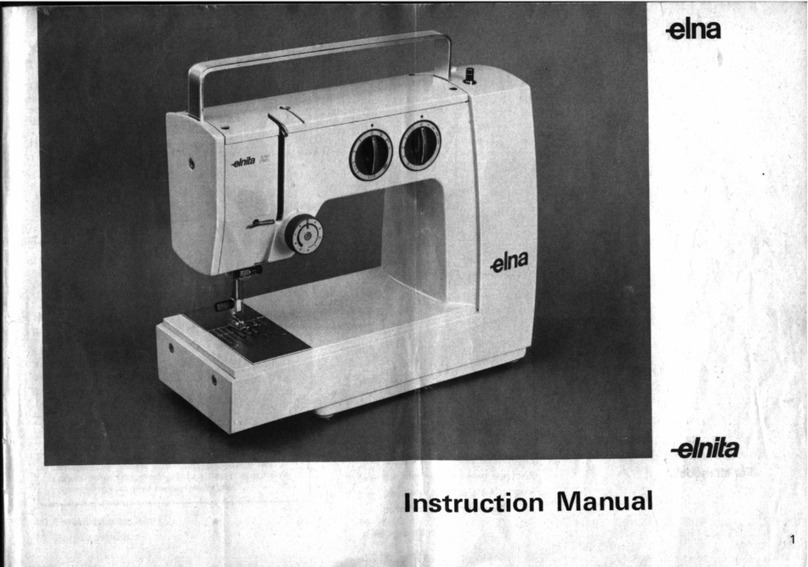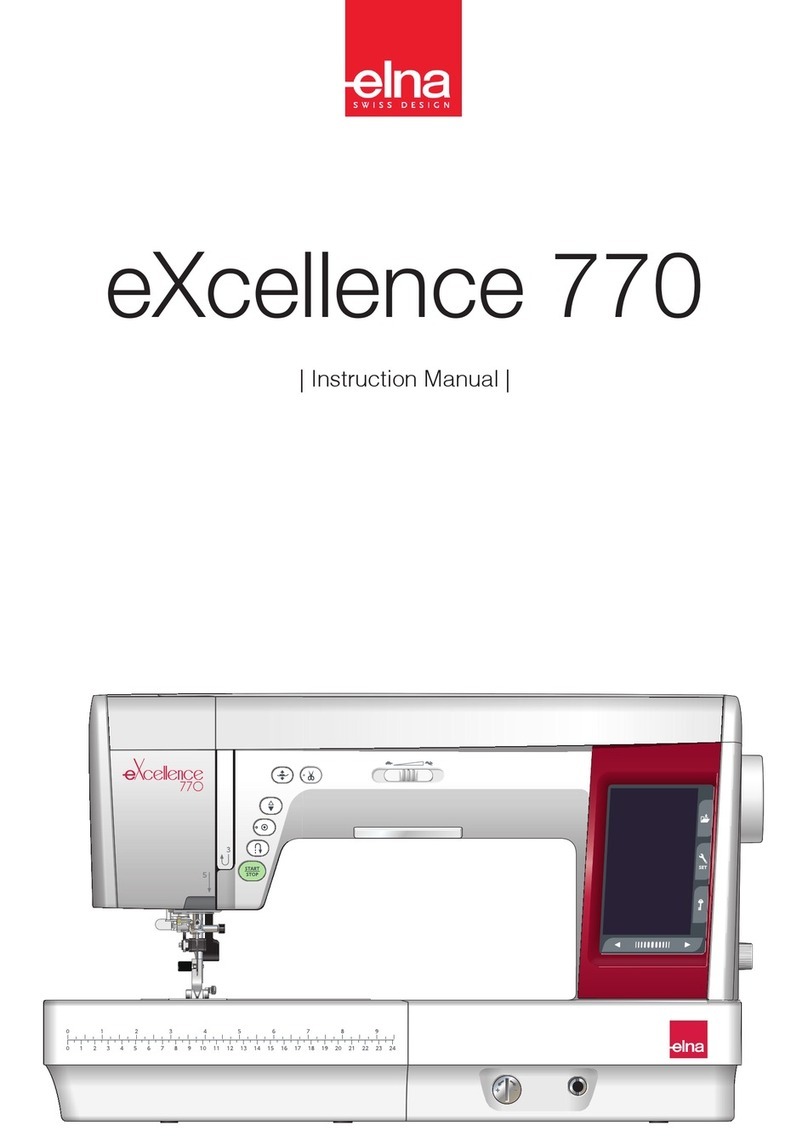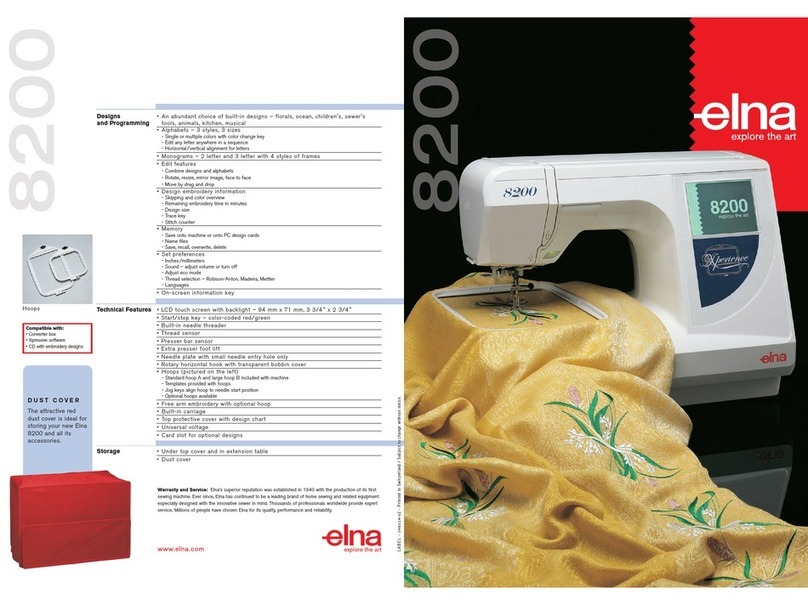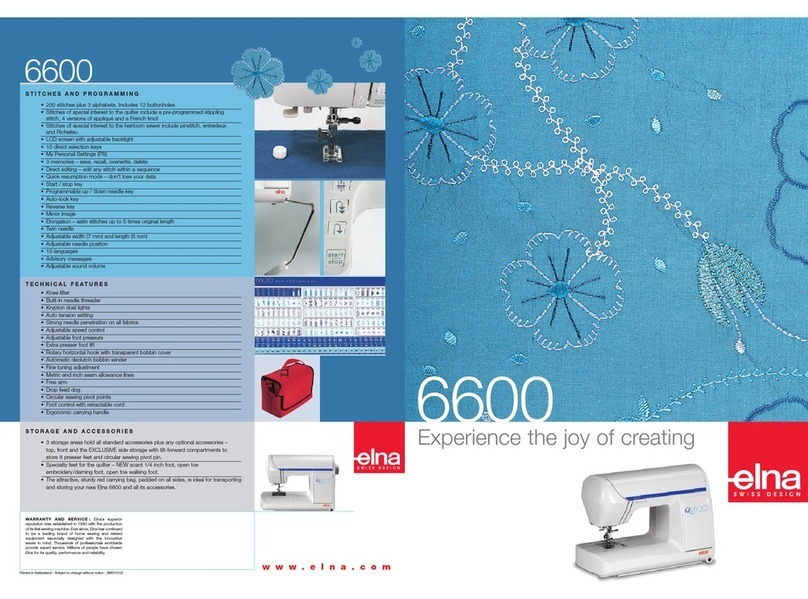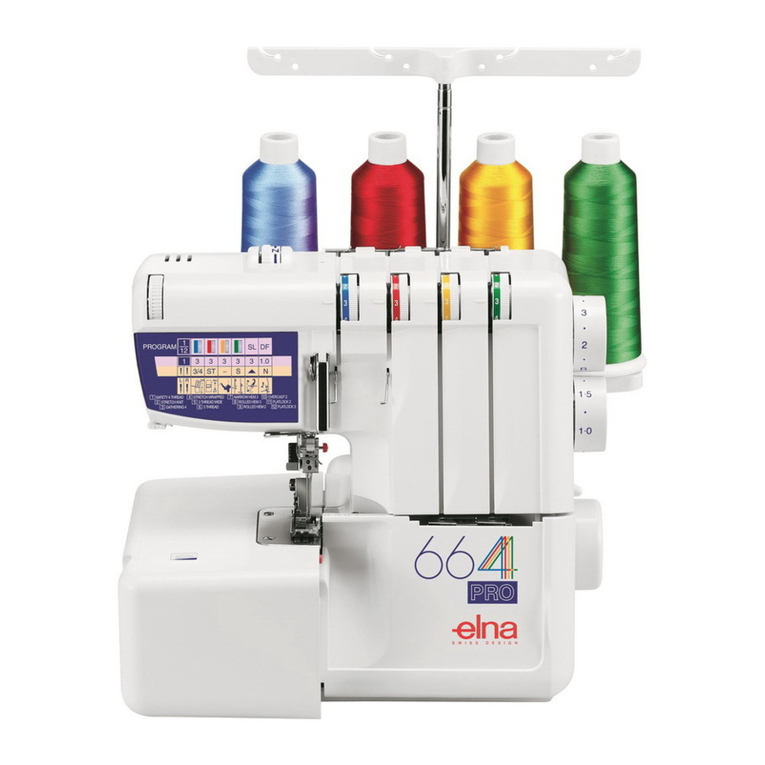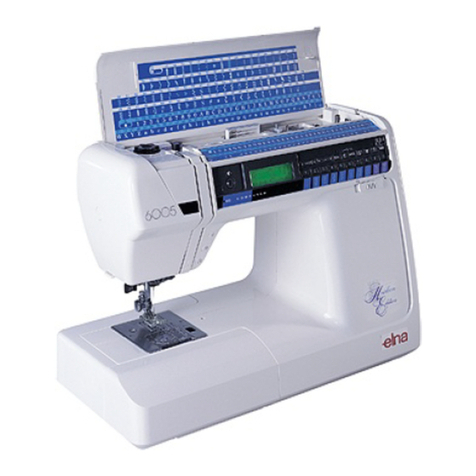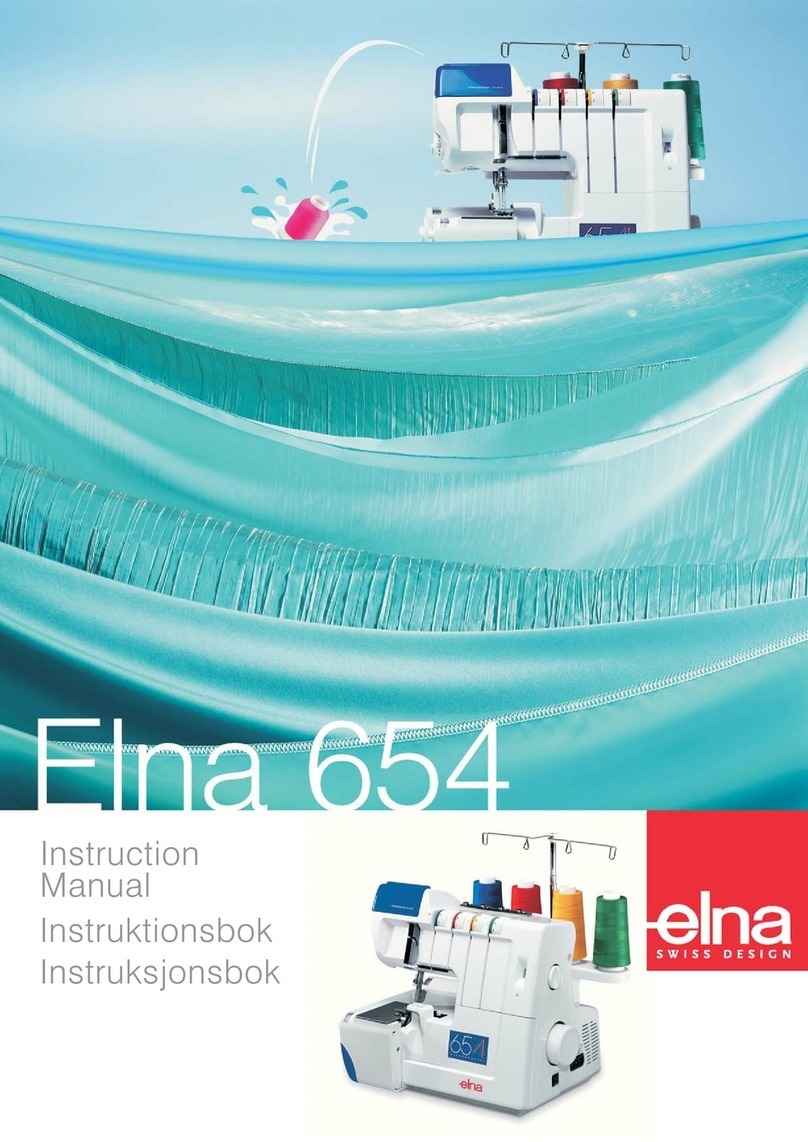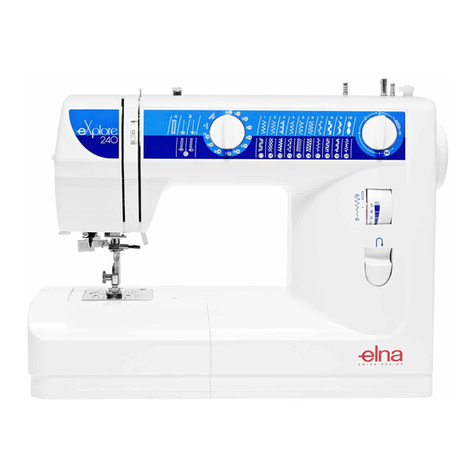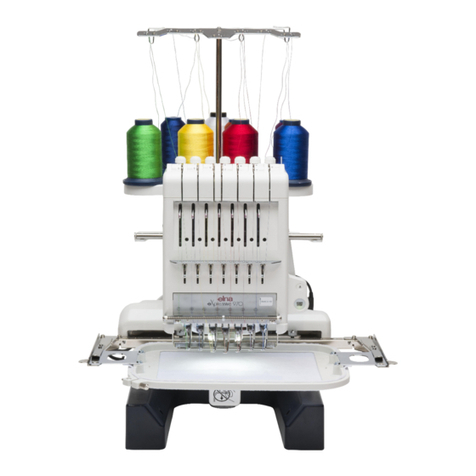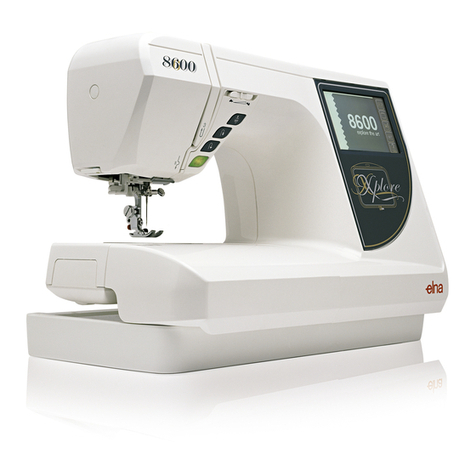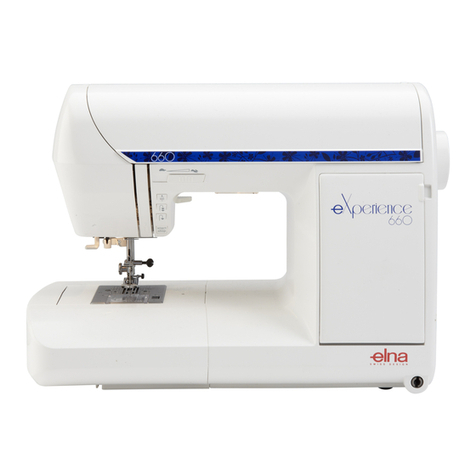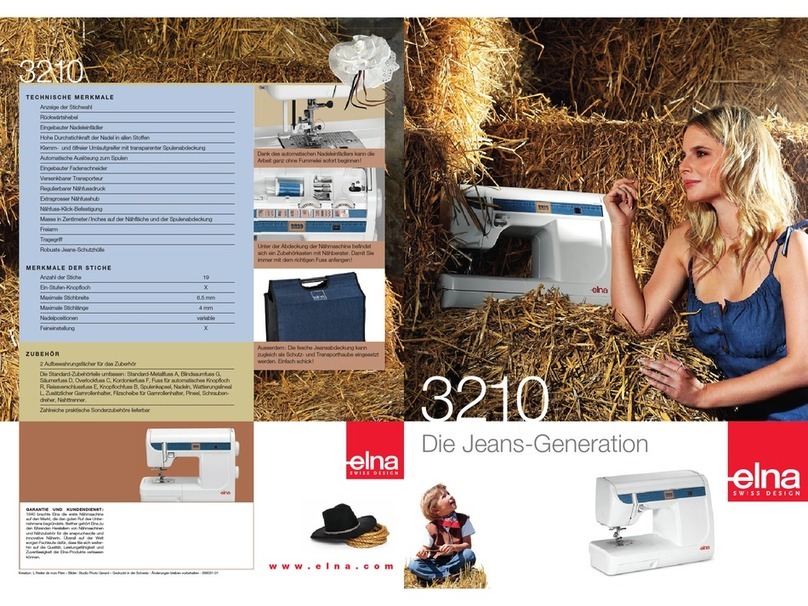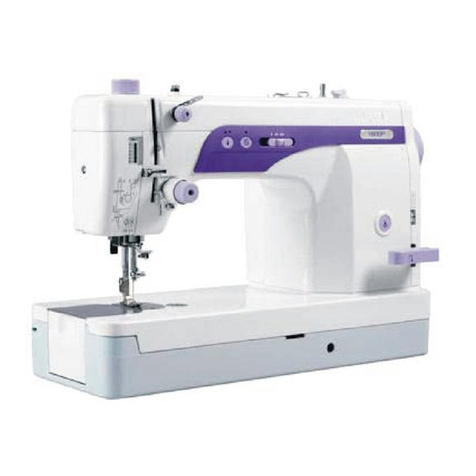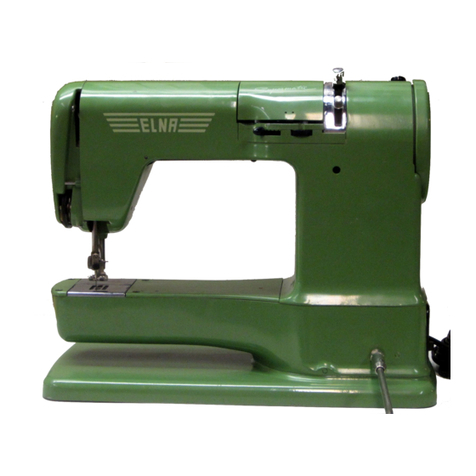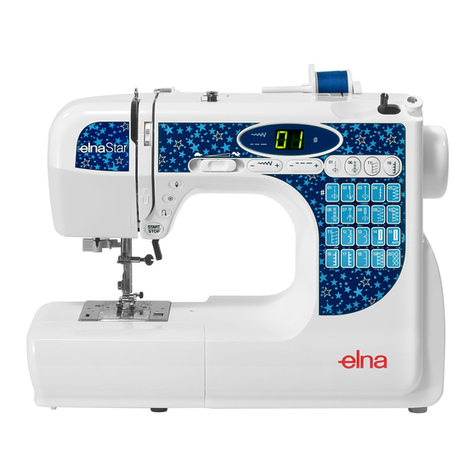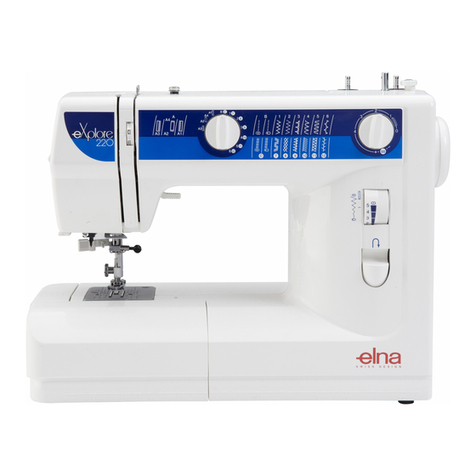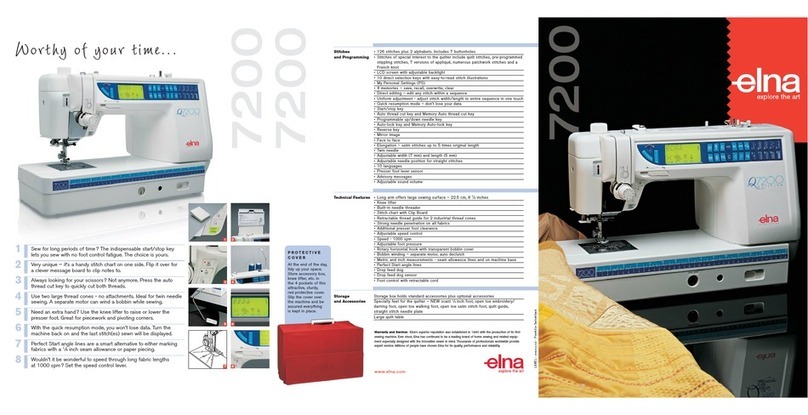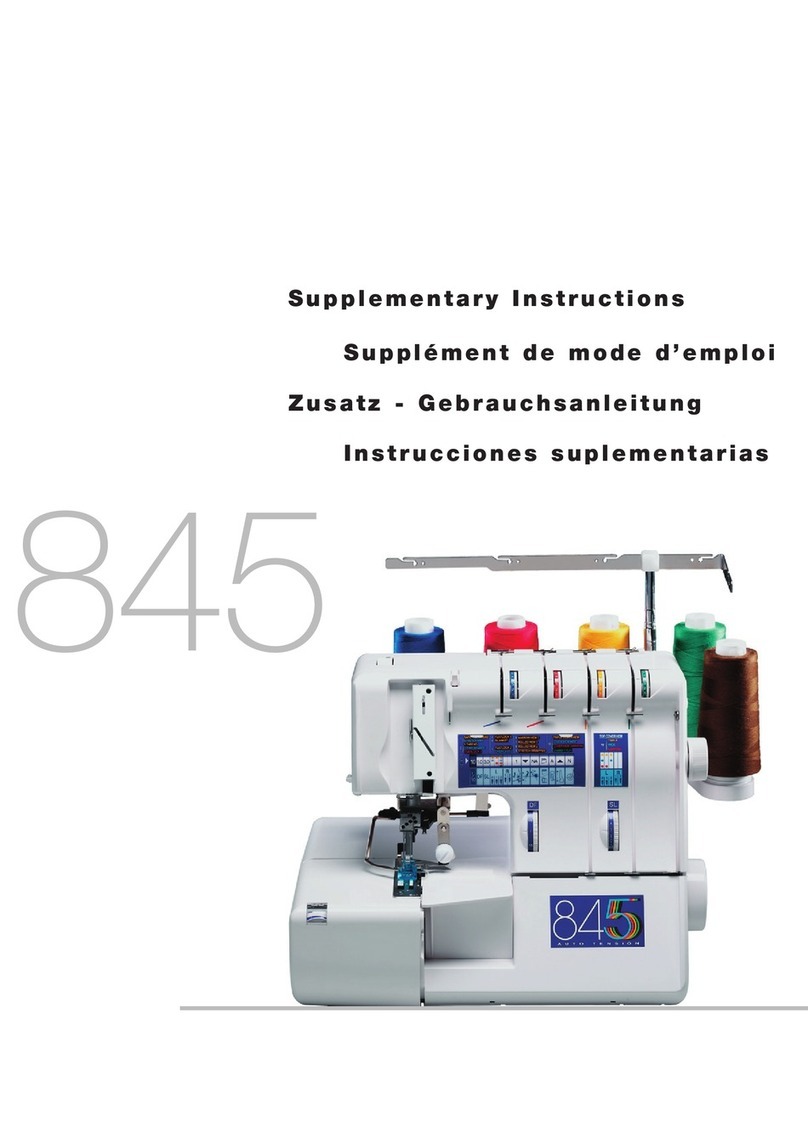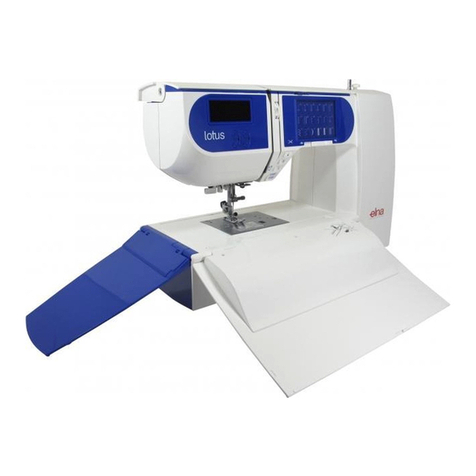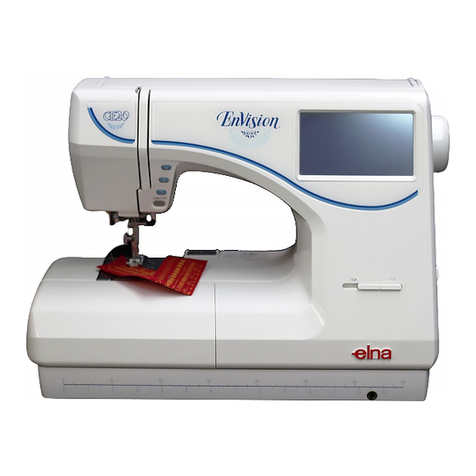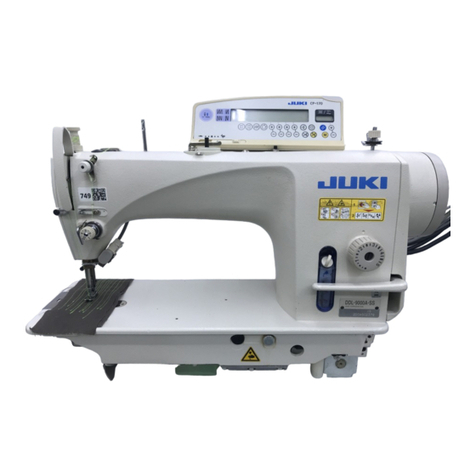
1
SECTION I. ESSENTIAL PARTS
Name of Parts ..................................................... 2
Extension Table................................................... 3
Free Arm Sewing................................................. 3
Standard Accessories ......................................... 3
Accessories Storage Box .................................... 3
SECTION II. GETTING READY TO SEW
Connecting the Machine to the Power Supply..... 4
Controlling Sewing Speed................................... 4
Presser Foot Lifter............................................... 5
Changing Presser Foot ....................................... 5
To Attach and Remove the Foot Holder .............. 5
Changing Needles............................................... 6
To check the needle............................................. 6
Thread and Needle Chart.................................... 6
Setting Spool Pins............................................... 7
Removing or Inserting the Bobbin Case.............. 7
Winding the Bobbin ............................................. 8
Threading Bobbin Case....................................... 8
Threading the Machine........................................ 9
Drawing Up Bobbin Thread ............................... 10
Thread Tension Dial........................................... 10
Stitch Selector Dial ............................................ 11
Stitch Length Dial .............................................. 11
Reverse Stitch Button........................................ 12
Darning Plate..................................................... 12
SECTION III. BASIC SEWING
Straight Stitch Sewing ....................................... 13
Seam Guide Lines............................................. 14
Turning a Square Corner................................... 14
Zigzag Stitching................................................. 14
SECTION IV. UTILITY STITCHING
Tricot Stitch ........................................................ 15
Knit Stitch .......................................................... 15
Straight Stretch.................................................. 16
Rick-rack Stretch ............................................... 16
Sewing Buttons.................................................. 17
Buttonhole ......................................................... 18
Zipper Application.............................................. 19
Blind Hem Stitch................................................ 19
SECTION V. DECORATIVE STITCHING
Shell Tuck .......................................................... 20
Smocking........................................................... 20
Applique............................................................. 21
Stretch Stitch Patterns....................................... 21
SECTION VI. TAKING CARE OF YOUR MACHINE
Cleaning the Bobbin Case and the Hook .......... 22
Dismantling Shuttle Race Unit .......................... 22
Assembling Shuttle Race Unit........................... 22
Cleaning the Feed Dog...................................... 22
Sewing Light ...................................................... 23
Troubleshooting ................................................. 24
TABLE OF CONTENTS
